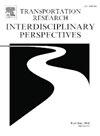Scenarios for the deployment of automated vehicles in Europe
IF 3.8
Q2 TRANSPORTATION
Transportation Research Interdisciplinary Perspectives
Pub Date : 2025-07-01
DOI:10.1016/j.trip.2025.101530
引用次数: 0
Abstract
The deployment of Automated Vehicles (AVs) is expected to address road transport externalities (e.g., safety, traffic, environmental impact, etc.). For this reason, a legal framework for their large-scale market introduction and deployment is currently being developed in the European Union. Despite the first steps towards road transport automation, the timeline for full automation and its potential economic benefits remains uncertain. The aim of this paper is twofold. First, it presents a methodological framework to determine deployment pathways of the five different levels of automation in EU27 + UK to 2050 under three scenarios (i.e., slow, medium baseline and fast) focusing on passenger vehicles. Second, it proposes an assessment of the economic impact of AVs through the calculation of the value-added. The method to define assumptions and uptake trajectories involves a comprehensive literature review, expert interviews, and a model to forecast the new registrations of different levels of automation. In this way, the interviews provided insights that complemented the literature and informed the design of assumptions and deployment trajectories. The added-value assessment shows additional economic activity due to the introduction of automated technologies in all uptake scenarios.
自动驾驶汽车在欧洲部署的场景
自动驾驶汽车(AVs)的部署有望解决道路运输的外部性问题(如安全、交通、环境影响等)。因此,欧洲联盟目前正在为大规模市场引进和部署它们制定法律框架。尽管朝着道路运输自动化迈出了第一步,但实现完全自动化的时间表及其潜在的经济效益仍然不确定。本文的目的是双重的。首先,它提出了一个方法框架,以确定欧盟27国+英国到2050年在三种情景下(即慢、中基线和快速)的五个不同自动化水平的部署路径,重点是乘用车。其次,通过计算自动驾驶汽车的增值来评估自动驾驶汽车的经济影响。定义假设和吸收轨迹的方法包括全面的文献综述、专家访谈和预测不同自动化水平的新注册的模型。通过这种方式,访谈提供了补充文献的见解,并告知了假设和部署轨迹的设计。附加价值评估显示,由于在所有摄取方案中引入自动化技术,增加了经济活动。
本文章由计算机程序翻译,如有差异,请以英文原文为准。
求助全文
约1分钟内获得全文
求助全文
来源期刊

Transportation Research Interdisciplinary Perspectives
Engineering-Automotive Engineering
CiteScore
12.90
自引率
0.00%
发文量
185
审稿时长
22 weeks
 求助内容:
求助内容: 应助结果提醒方式:
应助结果提醒方式:


